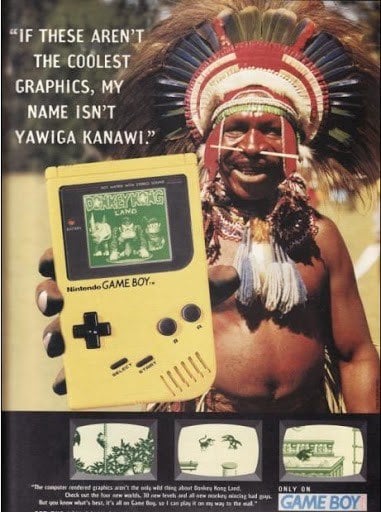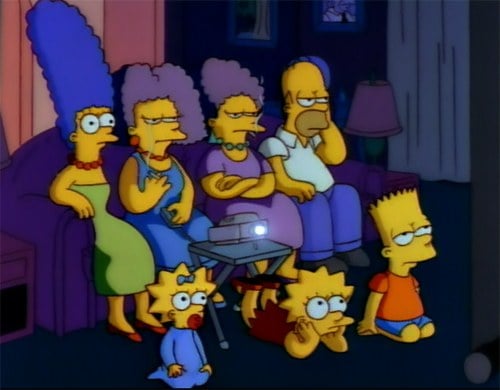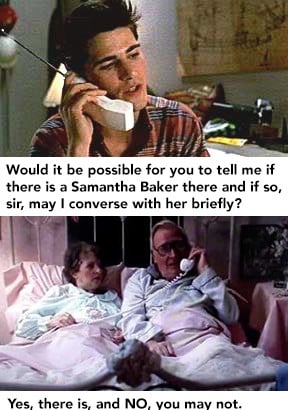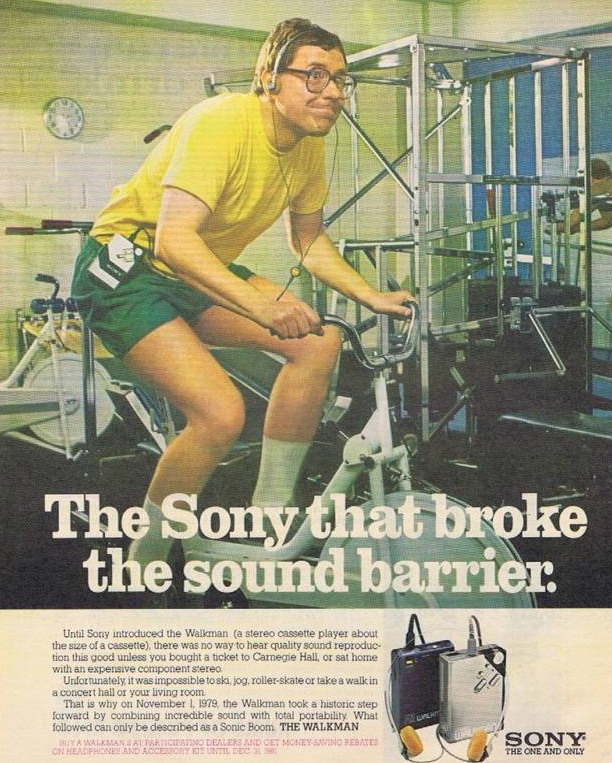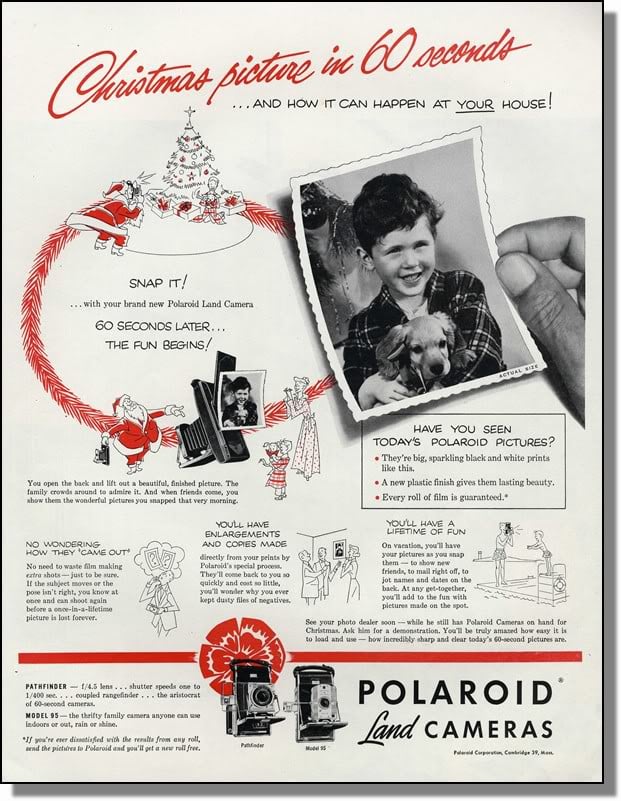1. Lugging around giant portable devices with calculator-style screens
Even explaining what gaming used to be like to people who grew up with palm-size devices with HD screens is no easy feat. A friend of mine once tried to explain what the original Gameboy was like to two girls aged 7 and 8. “The screen was black and white,” my friend said. “Oh yeah,” one of the girls immediately replied. “One of my friends has the Nintendo DS in black and white!” “No no,” my friend had to backpedal. “The actual Gameboy was just like a big gray box. The pictures on the screen were in black and white.” But by that point, it was a lost cause—the girls were back to playing Draw Something on their iPads. Point is, graphics like the ones touted in this (pretty darn racist) ad were muddy and illegible compared to even the “dumbest” phone or gaming device you could buy now. And remember how before there was a backlit screen, Gameboy’s solution was the Lightboy, an unwieldy magnifying lamp that you attached to the already unwieldy device?
2. The epic struggle of dealing with VHS tapes
Today, you’re a few taps or clicks away from the exact scene (or even the exact frame!) of whatever movie you want to see at any given time. Between YouTube, Netflix, Hulu, and the rest of the web, even the most obscure TV episode can be rewatched. Back in the day we had the VCR, which kids today might recognize from the mountainous piles of tapes at virtually every yard sale. Getting a tape of the movie you wanted to watch was just the first part of the adventure. (Forget about TV shows—you’d need to catch a rerun, wait for syndication, or just try to remember what had happened.) In the days before Blockbuster, you’d generally have to get the one copy from your local video store. If the previous renter wasn’t kind, you’d have to rewind, which would eventually wear out your VCR, already one of the more finicky pieces of home technology. Want to see a particular scene? Hit fast forward, hit rewind, hit fast forward again, ad nauseam, as you watch a blurred version of the movie speed by. And if you spent too long with your favorite tape, you’d get hit with late fees, not to mention explaining to your parents why you just had to hang on to Encino Man for that one extra day.
3. Finding a pay phone—a working pay phone.
Sit down children, and let me tell you a tale of what life was like before everyone had a cell phone. Need to call home to check in? Need to tell someone you’re running late? You had to find a pay phone… and then after you’d located a couple of pay phones, hopefully you’d stumble on one that was working, instead of ones where the receiver had been pulled off, the coin slot was jammed with gum, or worse. You also needed exact change, because the operator would soon be asking for it (and if you needed to talk more for than a couple of minutes, you were going to be hearing from the operator a lot). You were better off making your call quickly and moving on, so you wouldn’t aggravate the people waiting in line to use the phone behind you, or you’d wind up wasting 25 cents yelling at strangers to stop pounding on the door.
4. Sitting through slide shows of your relatives’ vacation photos
First of all, the “slide shows” we’re talking about are not a function in iPhoto (iPhoto didn’t exist). And no, this isn’t about PowerPoint. Back in the day, whenever some adults your parents knew went somewhere exotic like Hawaii or Washington D.C. or Sheboygan, you could count on an invite to come over to see their vacation slides. “Here we are in front of the Washington Monument.” (Click.) “And here we are next to the Washington Monument.” (Click.) And that’s if you were lucky! Chatty and/or photo-happy vacationers could force you into hours of staring at amateur pictures projected on someone’s living room wall. Sure, now everyone shares photos of everything via Facebook, but you can just look at them or not, and move on with your life!
5. Calling the airline to plan your vacation
You know how now you see TV ads touting travel websites that allow you to use one site to search airfares everywhere? Even finding out the fares for one airline used to be an exercise in patience and perseverance. In movies people just walked up to the counter, bought a ticket, and got on the plane. But in reality, things were much more complicated. If we wanted to see our grandparents, my mom would have to sit by the phone with a legal pad for hours, calling each airline to find out when the flights were, what the fares were, and so on. Sure, you could pay a travel agent to do it for you, but no matter what, you had no real way of knowing what you options were, at a glance. On the other hand, once you did get through planning your trip, you could check luggage without paying an extra fee, you didn’t have to strip down for airport security, and you’d get an in-flight meal (not saying it was good, but at least you weren’t paying for it). Sorry, American Airlines ad lady, a computer did replace you.
6. Finding your way with giant folding maps and car atlases
Road trips weren’t that much easier. Smartphones have made GPS units obsolete, and now plenty of new cars come with touch screens that plan out your route. Prior to all that, if you were headed somewhere new or you got lost and needed directions, it meant wrangling with a ginormous folding map or pulling out the trusty road atlas. Unfolding it was easy. Looking at it in the confines of your car was a bit less so, and required some maneuvering. Folding it back up into something the same size? Forget about it! (AAA still gives out free road maps, by the way, but these days hipsters use them as gift wrap.) If you were on a multi-state trip, chances are you used a road atlas—a spiral-bound book that usually gave you roughly two pages’ worth of maps per state, with insets showing you cities. It’s kind of a miracle that anybody made it anywhere.
7. Sharing a single landline with your entire family
Kids who have grown up in a cell phone-only home will never know the anxiety that comes with waiting forever for your crush to call, having to actually answer the phone every time to find out who’s calling. It’s your aunt? Got to wait ’til mom’s off the line with that big call. You finally pounce on the phone… and get to have a completely awkward conversation, because the phone is in the kitchen, and your parents and siblings are in there cooking, eating, eavesdropping, and so on. No matter how hard you tried, the phone cord (did I mention that phones had cords?) would only stretch so far, and it was inevitable that you were going to be overheard. If you were lucky enough to have two phones in your house, you had to worry that your sneaky little brother could be listening in on the extension! And when the phone bill came… let’s just say things could get ugly, especially since your mom probably told you it was impolite to call other people’s houses late at night, but late at night was when the rates went down.
8. Using your dial-up internet service… while someone else was on the phone.
Oh I’m sorry, kid—plain 4G is too slow for you? Clearly you don’t remember the days when dial-up was the only option, using your phone line to check out a Geocities page using Netscape Navigator or to make use of one of those free discs AOL seemed to send in the mail every three days. After a substantial wait and a bunch of disturbing sounds (like a fax machine breaking—wait, do you kids even know what a fax machine is?), you were finally free to join in your favorite text-based multiplayer game. At least, you were until someone tried to use the phone (you know, the one family phone you all shared). Half the time your connection was broken, and half the time your sister was screaming at you that she needed to use the phone. It’s basically the opposite of virtually everyone having a web browser on their laptops, their smartphones, and now, apparently, their wrists.
9. Carrying cassettes around with you
If you didn’t want to listen to the radio (AM/FM that is, not satellite) or you didn’t have reception, your option was to bring your tunes with you. That meant that whenever you sat in the backseat of someone’s car, almost inevitably you’d have a crate of cassette tapes beneath your feet. Rocking out to your Walkman while you rollerblade? Well, you needed to pick out a tape and hope you didn’t get sick of it (unless you crammed a spare one in your fannypack). Eventually, the compact disc came along, and that changed everything. Instead of stomping on cassettes that littered the car floor, you could rest your feet upon a pleather-covered binder full of CDs. No more Walkman, either—now you could have a Discman, and experience the thrill of a device that was awkward to hold and that caused your music to skip every time you made a sharp movement. The whole listen-to-any-song-you-want-whenever-you-want thing still blows my mind. I feel like if I could travel back in time and tell my kid self about Spotify, I would blow their minds, too.
10. Waiting (and waiting) to see your pictures.
Okay kids, you know how your pictures look with Instagram filters like Nashville and 1973? Well, that is how pictures actually used to look. The biggest difference is that instead of being able to rattle off 30 selfies in as many seconds and see them all instantly on your phone, taking a picture was a pretty big deal. You only got 30 or so images per roll of film, so photos were reserved for special occasions (e.g., not just that you were in the bathroom and your hair looked really, really good). Did the photo come out? Were your eyes closed? Well, hope for the best — you’ll find out once you’ve finished the whole roll of film, taken it to get developed, and picked up the prints. Yeah, Polaroids were instant, but Polaroid film wasn’t cheap! No one was just snapping away with them. You probably have more photos saved on your phone right now than your grandparents took of themselves in their entire lives. Featured photo credit: free photos & art via flickr.com
